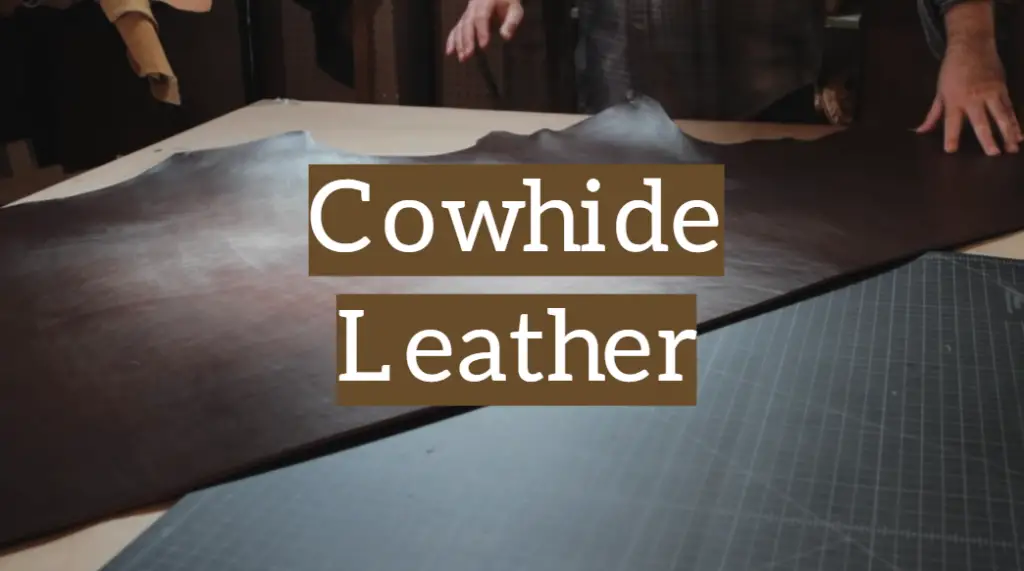
Most natural leather products that you can buy in malls, specialized stores and from leathercraft masters are made of cowhide materials. The following guide shows why so many manufacturers pick cowhide leather, what are the benefits of cowhide and how to take care of this material.
What is cowhide leather: definition and uses
Cowhide leather is made of cattle skin. It is both elastic, with an even and smooth layer, about 1 inches thick. This leather type is applied for the manufacture of shoes. Cowhide is produced by chrome tanning. For example, cowhide leather shoes are received from the material of more than 0.5 inches thick. The animal hides of medium thickness are used for the manufacture of rawhide and saddlery leathers. The thicker hides are used for making soles and technical leathers.
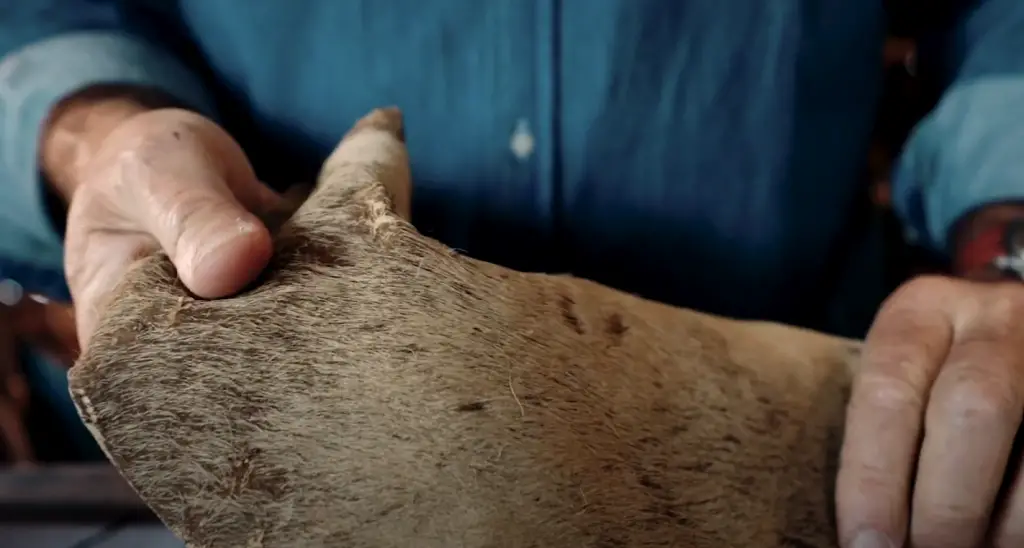
Cowhide is an elastic and durable leather with an impressive natural texture on the front side. It can be processed through dyes, pigments, colorings. Such flexibility allows you to get a significant range of leather materials of various colors and textures, including elite and exclusive materials. It has a wide range of uses, including the manufacturer of clothes, shoes and haberdashery, upholstery, lining and car interiors, residential and office premises, accessories and gift items.
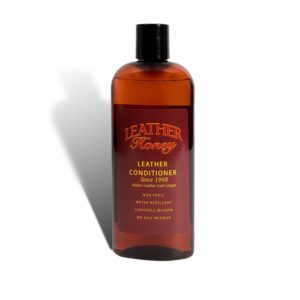 The Leather Honey brand is a cleaning solution that’s perfect for anyone that has a stained or heavily soiled cowhide leather goods. It rids away dirt and grime fast, resulting in an excellent restoration job.
The Leather Honey brand is a cleaning solution that’s perfect for anyone that has a stained or heavily soiled cowhide leather goods. It rids away dirt and grime fast, resulting in an excellent restoration job.
Different types of cowhide leather:
- Bovine leather is the thicker and heaviest type of cowhide. It is used for the mass production of leather products for sale. The thickness of bovine cowhide varies from 0.5 to 1.5 inches. Bovine leather has a rough structure, increased wear resistance and durability but it requires certain experience and special tools for successful processing;
- Buffalo skin is even a stronger, thicker and heavier material. Such leather has the longest service term but extremely specific applications are rarely used for the manufacture of everyday products;
- Real cowhide leather is as thick and strong as bovine, but at the same time it is more flexible and supple cattle skin with a peculiar texture of the front side. It is distinguished by its special elasticity and wear resistance, but is rarely used for the mass production and sale;
- Bison leather type is very similar to real cowhide but this material is much stronger and durable. That is why bison leather, just like goatskin, is used for making moto jackets and protective gear for police officers. Unlike other cowhide types, bison skin has a distinctive pebbled grain surface;
Grades of cowhide leather
Cowhide leather just as other types have such grades:
- Full-grain leather is never buffed or sanded. It has the same natural marks as the animal hide before processing. This material develops a beautiful patina. Full-grain cowhide jackets are very durable and nice-looking;
- Suede cowhide leather is crafted from the split and rawhide layers of animal hides. It is a lightweight drape with a porous and water-absorbent surface. It looks like velvet but not recommended to wear during the rainy weather;
- Genuine cowhide leather is much thinner than the previously mentioned top-grain and full-grain materials. It is distinguished by poor quality, but still this material is durable and supple. Budget-friendly genuine leather bags and belts are quite popular. Artisans cover the imperfect surface of genuine leather with grain patterns and finishes;
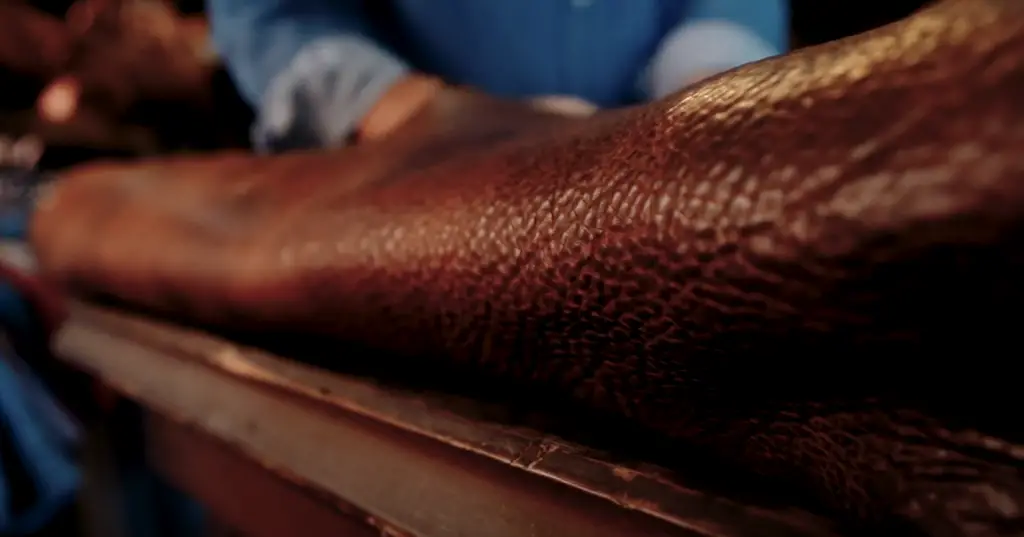
Benefits of applying cowhide leather:
- It is one of the most high-quality, durable and sophisticated raw materials used for the manufacture of many leather products;
- High density, elasticity and strength;
- It is resistant to mechanical abrasion and environmental influences;
- With proper care using specialized products, cowhide can maintain its appearance and consumer qualities for many years;
- Gets a natural patina and real vintage gloss after processing;
Cons of using cowhide leather
- High price of cowhide leather bags and wallets;
- Almost daily care;
Features of split cowhide leather
Split cowhide leather is the bottom layer of the animal hide. Either suede is made from it (not the best option, but the most common one), or corrected-grain leather. In fact, corrected-grain is also processed from top-grain leather type but split is usually valued lower.
Split leather is a natural leather material received by the mechanical damage (sawing or grinding) of the finished cattle skin into separate layers. The number of layers varies from 3 to 6, depending on the thickness of the material. As a rule, after the chrome and chrome-fat tanning cowhide is treated with grinding.
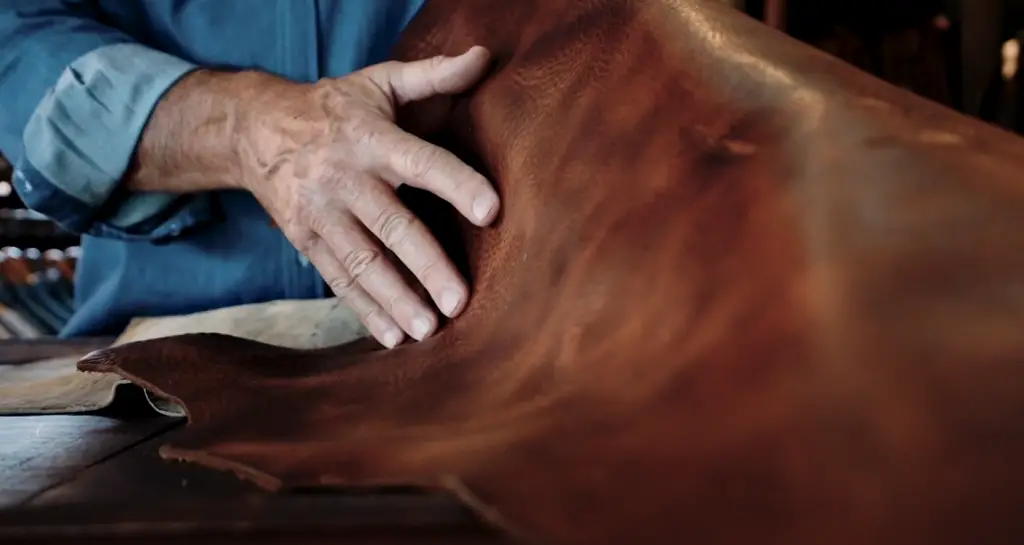
The front layer of split cowhide leather practically does not differ from genuine leather, it retains its properties, a natural pattern of measures and is intended for the manufacture of high-quality leather products.
The middle layer of split is unsuitable for everyday wear, since the upper part of the material is usually broken during delamination. That is why the clothes made from this raw material will not have enough water-resistant properties.
 The Leather Honey brand is a cleaning solution that’s perfect for anyone that has a stained or heavily soiled cowhide leather goods. It rids away dirt and grime fast, resulting in an excellent restoration job.
The Leather Honey brand is a cleaning solution that’s perfect for anyone that has a stained or heavily soiled cowhide leather goods. It rids away dirt and grime fast, resulting in an excellent restoration job.
A simpler solution is to coat the split cowhide leather with acrylic resins by spraying or using a watering machine, after which the front surface is fixed with varnishes.
What is the difference between split cowhide leather and genuine leather?
It is quite simple to distinguish split cowhide leather from genuine leather. Genuine leather material has a smooth fleecy structure. If the material is glued from two layers, this indicates a second-rate product. It is necessary to wrinkle or bend the genuine leather sample, and if the bubbles remain on such a thing or paint peels off, this is also a sign of a split leather product. Real leather, as a rule, remains even and leaves no traces of deformation.
How to test cowhide leather?
- Check the label. Real leather is the label that you need to look for. Opt for the labels “100% real leather”, “full-grain/top grain” or even “genuine leather”. But keep in mind that genuine cowhide leather is a natural material of the poorest quality. Fake leather materials are labelled as “man-made”. It is a sign that you have a flexible polyvinyl chloride (PVC).
- Look up real close. Real cowhide leather has a structure with natural blemishes and imperfections, despite polishes. Fake leather is a machine-made fabric that has a very smooth surface.
- Touch the leather. Real leather won’t feel perfectly smooth to the touch. Press the fingers into the leather material – the surface may wrinkle and stretch a bit. On the other hand, fake leather feels cold and unnaturally smooth. It won’t stretch or wrinkle.
- Smell the leather. Only the natural material will have a distinctive “leather” smell. Faux leather won’t have such an organic smell.
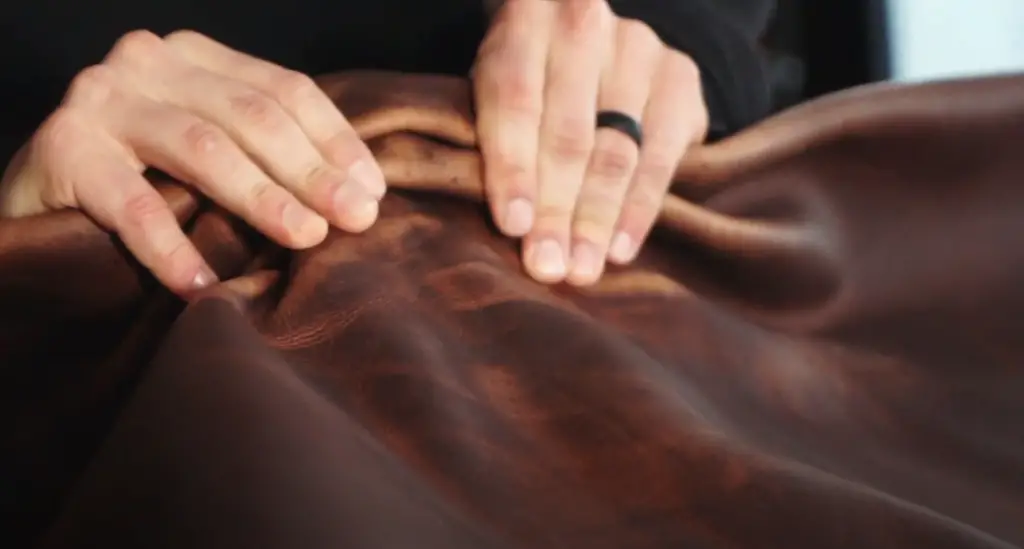
Final thoughts
Now you know what is cowhide leatherspan style=”font-weight: 400;”>, how it is produced, its advantages and disadvantages. Make sure to buy natural cowhide leather and it will serve you for many years (with a proper leather care). If you are into making DIY leather clothes or accessories, cowhide is an indispensable material for creating nice-looking and durable products.

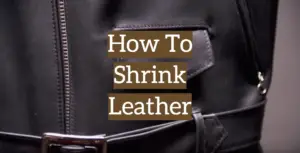
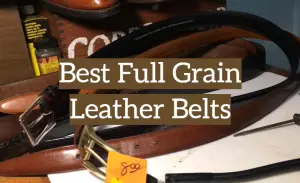







Just wanted to say thank you. I am writing a paper for school on different types of leathers and uses and I was having trouble finding the right information for cowhide leather. Your information covered everything I needed for my paper. I will be sure to put it as a reference link at the bottom. Thanks so much!